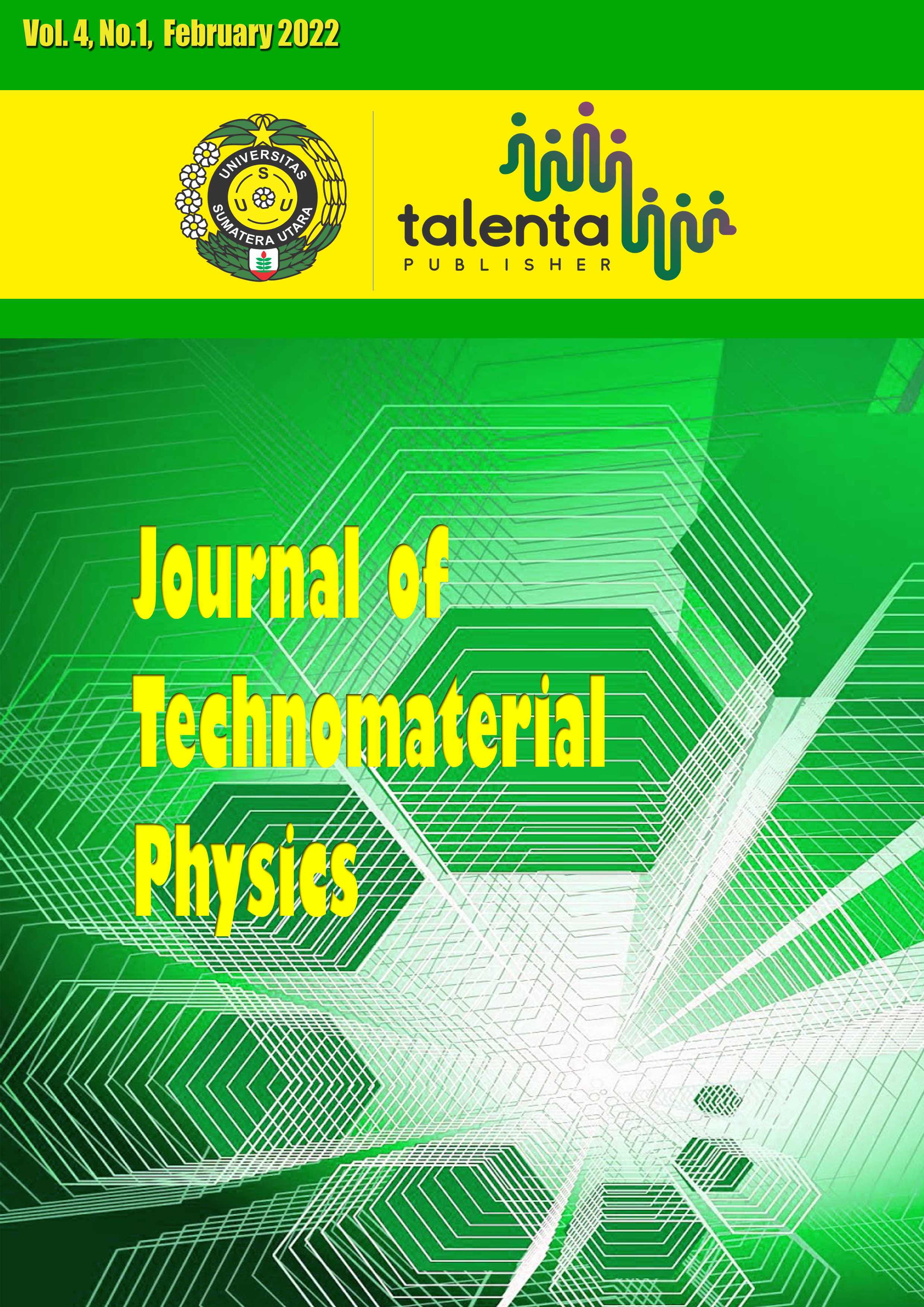Effect of Additional Cu on Structural and Optical Properties of TiO2 Synthesized with Sol-Gel Method
DOI:
https://doi.org/10.32734/jotp.v4i1.7851Keywords:
Calcination Temperature, Cu Doping, Nanoparticles TiO2, Sol-Gel MethodAbstract
In this study, TiO2 doped with Cu has been successfully synthesized using the sol-gel method by varying the addition of Cu and the calcination temperature. Sample preparation was started by mixing 0.75 mL of 37% HCl in 49.25 mL of 96% ethanol and stirred with a magnetic stirrer for 10 minutes. Then 10 mL of TTIP (Titanium Tetraisopropoxide) was added dropwise using a dropper and the solution was stirred again with a magnetic stirrer for 60 minutes. Then added Cu with variations of 1%, 2%, 3%, 4%, and 5% and stirred again for 60 minutes using a magnetic stirrer. The sol solution was then put into the furnace at a temperature of 100°C for 3 days. The crystalline sol solution was then mashed with a mortar to a submicron size, then washed with 50 mL of Aquades and stirred using a magnetic stirrer for 10 minutes. The washed samples were then dried in a furnace at a temperature of 100°C for 1 day. Followed by calcination for 3 hours with temperature variations of 450°C, 500°C, 550°C and 600°C to release the gases in the nanoparticles. Cu-doped TiO2 nanoparticles were characterized using test equipment such as XRD, SEM-EDX, and UV-Vis. From the results of XRD analysis obtained 3 phases namely Brookite, Rutile and Anastase, and the crystal size is unstable and the shape of the sample particles is tetragonal. The results of the SEM-EDX analysis showed that the content of the sample was in accordance with the experiments that had been carried out. The results of UV-Vis analysis show that the wavelength is inversely proportional to the bandgap energy.
Downloads
Downloads
Published
Issue
Section
License
Copyright (c) 2022 Journal of Technomaterial Physics

This work is licensed under a Creative Commons Attribution-ShareAlike 4.0 International License.








